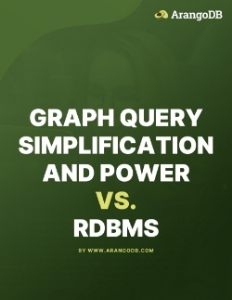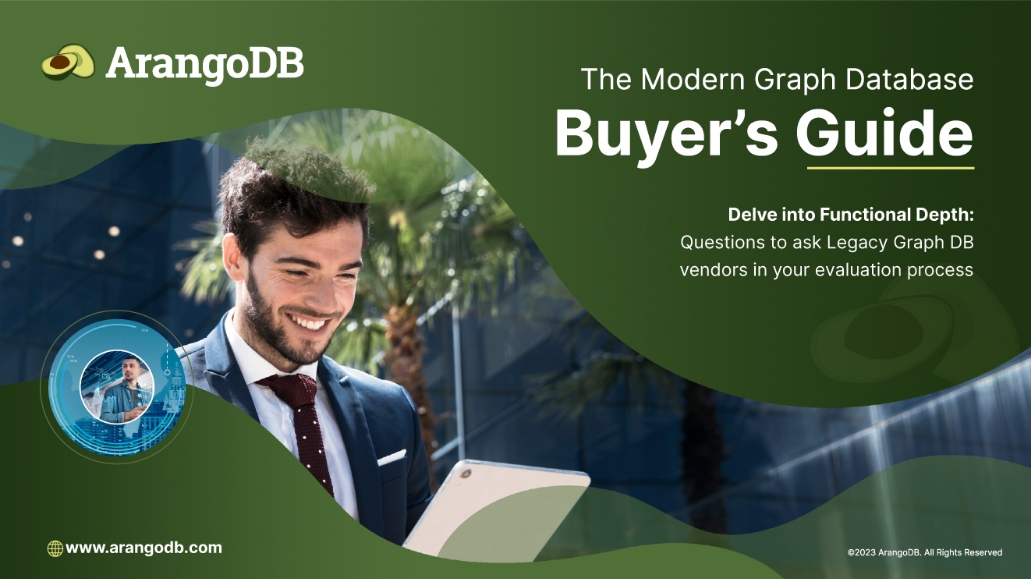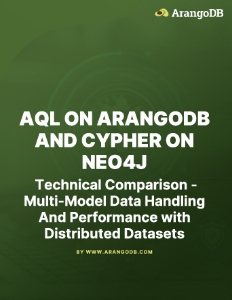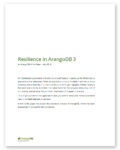

Data Sheets
Read this overview to learn more about the highest-rated Graph Database, including use cases and benefits of every edition of ArangoDB.
Introducing ArangoDB Visualizer, the next-level graph exploration tool designed to transform the way you interact with complex datasets. Leveraging the advanced capabilities of ArangoDB, this professional-grade viewer offers unparalleled clarity and insight into your graph data. With an emphasis on user experience, it simplifies the discovery of intricate data relationships through intuitive, dynamic representations. Enhance your analytical processes with a platform built for efficiency, accuracy, and ease of use.
Dozens of ArangoDB customers started with - and quickly outgrew - Neo4j. While Neo4j should be credited with building awareness and momentum for the graph database market, the age-old axiom applies: the first mover advantage of strong brand awareness is often paired with the disadvantage of having nimble competitors surpass a legacy vendor’s 1st-gen architecture and technical debt. This is the case with ArangoDB vs. Neo4j, where a number of meaningful and defensible competitive advantages yield real-world consequences for the success of mission-critical applications and use cases.
Large Language Models (LLMs) like GPT-4 and Knowledge Graphs (KGs) form a potent synergy. LLMs excel in generating human-like text but sometimes lack detailed knowledge. KGs provide this by structuring interconnected facts and relationships.
E-Books
Graph databases employ a direct storage mechanism for relationships, streamlining the process of executing complex relationship-based queries without the need for multiple join operations, which are typically required in RDBMS. This efficiency is further amplified by their specialized capabilities in path finding and traversal, including techniques such as index-free adjacency, where nodes maintain direct references to adjacent nodes.
Exploring Functional Depth in Graph Databases - Navigating the rapidly evolving graph database landscape requires a focus on the functional depth and versatility of modern solutions like ArangoDB. This concise guide is a key resource for those on the path to selecting a graph database that best suits their distinctive needs, offering insights into the unique advantages and advanced features of ArangoDB over legacy graph databases.

In the exploration of query languages designed for graph databases, ArangoDB Query Language (AQL) and Cypher, the query language for Neo4j, emerge as pivotal tools tailored for distinct operational paradigms. This technical paper delves into a comparative analysis of AQL and Cypher, highlighting scenarios where AQL demonstrates superior capabilities.
Infographics
Read why according to G2, ArangoDB users rated higher than Neo4J. Graph database users rank ArangoDB higher for: Ease of Use, Meets Requirements, Ease of Admin, Query Language, Quality of Service, Ease of Doing Business.
With the FBI estimating that cybercrime costs Americans over $6 billion annually and the World Economic Forum predicting it could reach $10.5 trillion by 2025, it’s clear that cybersecurity is a crucial concern for companies of all sizes.
Graph databases provide inherent advantages in scenarios where complex, multi-level relationships between data need to be established and queried at scale for efficient decision-making. ArangoDB’s Graph Done Right approach addresses the challenges faced by organizations in managing interconnected data and empowering a growing number of data users.
This infographic highlights the benefits of using graph databases for network management in today’s complex enterprise networks. The use of graph databases for network management is explained through various capabilities, including troubleshooting network errors, analyzing capacity, cataloging assets, scaling IT operations, optimizing infrastructure design, and planning downtime. It emphasizes that graph databases have been primarily used by data scientists, developers, and architects but have extensive applications in network management. Learn more about the role that graph technologies will play in data innovations, with 80% of data innovations expected to use graph technologies by 2025.
White Papers
Explore how graph structures empower semantic queries, allowing nuanced storage and representation of intricate data relationships. This whitepaper delves into the transformative capabilities of graph databases in enabling unprecedented analytical depth. From social networks to interconnected data ecosystems, discover how specialized algorithms like graph traversal facilitate efficient analysis and retrieval of relational data, unveiling hidden patterns, recommending connections, and recording significant relational events. Gain insights into leveraging graph databases to optimize your relationship-centric data exploration and enhance decision-making processes!
Graph databases play a critical role, and the need to extract the most value and uncover the hidden meaning from the mountain of data you have in your company is not going anywhere. The visualization and how the data dots are connected help organizations see things in their data like they never have before.

This whitepaper compares relational database management systems (RDBMS) and modern Graph database systems — in particular, MySQL and ArangoDB. It describes their key concepts, contrasts both at the end of each section, and concludes by explaining what sets ArangoDB
Across industries, fraud is a growing problem resulting in a global annual loss of $3.7 trillion. Fraudsters became more sophisticated in hiding their activities by forming fraud rings, using stolen identities and other patterns. Traditional approaches still focus on discrete data missing many opportunities to identify or prevent fraud.
Multi-model lets organizations see data from different perspectives, its context and detect fraud patterns with graph database technology even within large scale datasets. In this white paper we will show how to convert data from relational to multi-model graphs, how various fraud detection queries work in ArangoDB’s Query Language (AQL) and how this Fraud Detection can be done at scale.
Enterprise Knowledge Graphs (EKGs) have been on the rise and are incredibly valuable tools for harmonizing internal and external data relevant to an organization into a common semantic model to improve operational efficiency for the enterprise and competitive advantage for the business units. On the other hand, EKGs can be difficult to develop and sustain, suffer from scalability issues, and can be difficult for business units to consume.
This White Paper describes some of these challenges and how a flexible data representation of a multi-model graph can address them.
In this white paper, we explain the resilience concept of ArangoDB 3. When an application runs on multiple machines or cloud instances, the probability of a machine failure is no longer negligible. Thus, if you run distributed applications and you want to sleep well, these applications need to be fault tolerant or resilient.
We show that an ArangoDB cluster with 640 vCPUs can sustain a write load of 1.1M JSON documents per second which amounts to approximately 1GB of data per second, and that it takes a single short command and a few minutes to deploy such an 80 node cluster using the Mesosphere DCOS.

When it comes to choosing the right technology for a new project, it can often be challenging to define the exact right tools that will match set-up criteria from start to finish. In this white paper, we explain what a multi-model database is, including a use case based on aircraft fleet management.

In this demo, we will share how ArangoDB can be snapshotted with the ease of a single AP call.
Courses
Read this overview to learn more about the highest-rated Graph Database, including use cases and benefits of every edition of ArangoDB.

If you made your first steps with AQL, played around with a few queries and now want to speed things up a bit, this course is for you.
Lunch Break Sessions
The Graph and Beyond Lunch Break is a series of 10-15min videos about topics like Fraud Detection with ArangoDB, AQL for eCommerce Analytics, Graph Analytics and more.
Recent Webinars Recordings
Watch the Hacktoberfest 2020 Intro to Knowledge Graphs talk with Chris Woodward and the team from reKnowledge
Ewout Prangsma (ArangoDB ArangoGraph) and Ayal Rosenberg (WeBill.net) discuss the impact of a managed multi-model graph database on development efficiency.
























